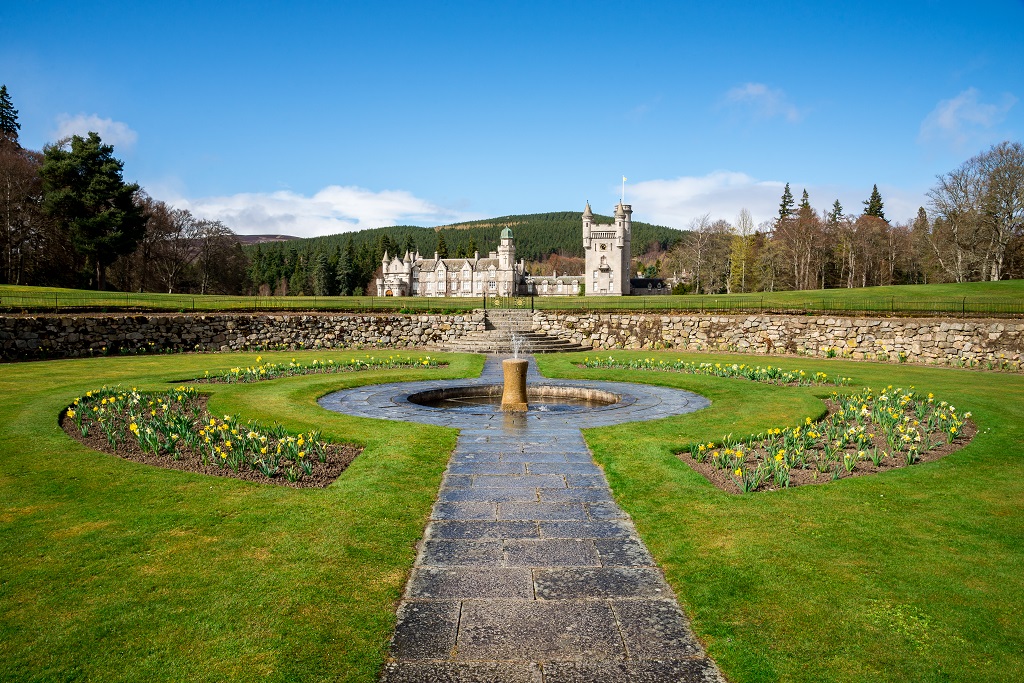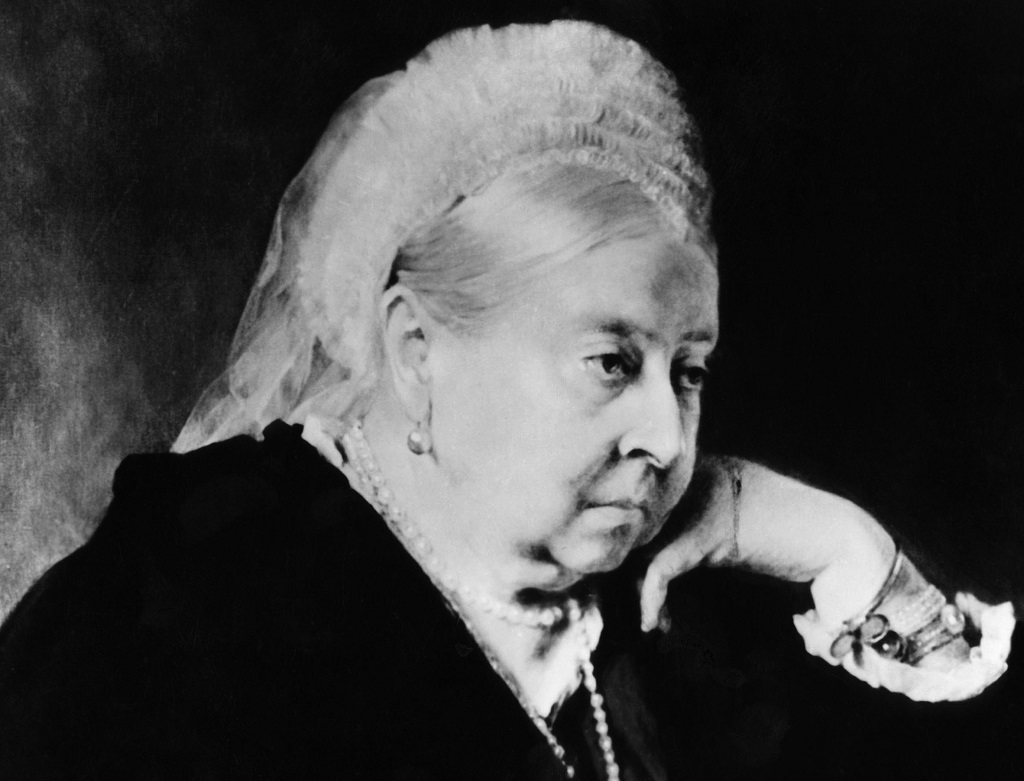Queen Victoria had a fascinations with the spooky goings on at her Highland retreat of Balmoral.
Her interest started properly in 1866 when, after paying a visit to Mrs Grant, mother of John Grant, the head keeper at Balmoral, on the afternoon of 31 October she saw children carrying torches, and bonfires appearing on the hills on the other side of the river. ‘These,’ she noted in her journal, ‘had a very pretty effect.’
By 1868, this trip for tea on the estate prior to joining in the Halloween celebrations had become something of an annual ritual for Victoria and her youngest children as she describes in her Highland Journal: ‘Mrs Grant gave us “whisked cream” as she called it, with oatmeal sprinkled at the top, which she said everybody eats on Hallowe’en. At 6 the torches began to be lit up, Louise, Leopold & Christian each carrying one & Lenchen & I drove. On nearing the Castle, numbers met us, & we remained out to see all walking round. Then some reels were danced round a blazing fire, made from a pile of torches. It had a wild effect. Unfortunately the wind was terribly high.’
In subsequent years, as darkness began to fall on 31 October, the Queen would drive out from the castle in an open carriage carrying a lighted torch. She was followed by a procession of over 100 torch-bearing royal servants and tenants from the local farms with their families, who were all accompanied by a piper.
At the front of the castle burned a huge bonfire made up of boxes and packing cases reserved throughout the year especially for that purpose.
Next, a servant dressed as a hobgoblin would appear pulling a cart which carried an effigy of a witch. The cart became known as ‘the shandry dann’ and this term later became synonymous with the witch herself. Spear-wielding fairies and the torch-bearers would gather around the fire to watch the goblin throw the witch to the flames, after which reels were danced to the ‘stirring strains’ of the bagpipes played by Ross, the Queen’s piper.
Sometimes matters got out of hand. In 1874 the celebrations were supposed to end with a dance in the ballroom but this plan was abruptly dropped because some of the revellers behaved in ‘a rather disorderly manner’ at that night’s bonfire.

Queen Victoria enjoyed spending time at Balmoral
Halloween at the castle became an event that many members of the Royal Family were loath to miss. In 1873, the delicate prince Leopold was ‘rolled’ into the Queen’s bedroom, presumably on his sickbed, so that he could watch through the window.
In 1877, the Queen wrote how she had hurried back from a drive to be in time for the parade and that her daughter Princess Louise walked at the side of her carriage carrying a torch and looking to the Queen ‘like one of the witches in Macbeth’. So connected did Queen Victoria and her family become to the festivities at Balmoral that the occasion became dubbed locally as the Queen’s Halloween.
Throughout the 1870s and 1880s, the Queen continued to celebrate Halloween with increasing – and what seemed to some almost dangerous – vigour.
By 1881 the Dundee Advertiser was reporting how the usual burning of the witch had evolved into a rather sinister mock courtroom drama.
‘All being in readiness, a light was applied to the mass of combustibles by the hand of her Royal Highness the Princess Beatrice and soon the flames roared and cracked, and rose above the highest of the Castle towers. On a given signal, a band of figures in masks, and wearing the most grotesque dresses imaginable, issued from the mews of the Castle followed by a car in which was seated the effigy of a witch. The car was drawn by a hideous looking demon dressed in gaudy colours, and after several tours had been made around the bonfire, a formal Court was held by the company and the witch placed on trial. After the examination of one or two witnesses, the guilt of the witch was held to be clearly proved, and the judge pronounced the sentence of death by burning. Immediately on the sentence being pronounced, the witch was dragged from the car and hurled into the flames, where she was speedily reduced to ashes amidst the shrieks and howls of the assembled ‘spirits’. A witch hunt followed, and was the cause of much merriment.’
It is perhaps unsurprising that the Queen’s revelries on Halloween came to be heavily criticised in the press. First, it was considered unseemly, if not ungodly, for the Christian Queen of the British Empire, and Head of the Church of England at that, to be consorting with devils and demons.
In The Bury and Norwich Post of 11 November 1879, an outraged journalist wrote that the spectacle seemed calculated ‘to foster rather than abate, a form of superstition which still has much hold on the ignorant in some parts of her Majesty’s dominions.’

Queen Victoria spent more time at Balmoral after the death of Prince Albert in 1862
Other papers saw humour in the Queen’s apparent obsession with evil spirits, with one remarking in 1882, that ‘the majestic-looking demon’ who figured in the festivities that year bore a marked resemblance to Prime Minister Gladstone (known to be no favourite of the Queen).
There was also another simpler reason why the Halloween at Balmoral festivities of 31 October met with disapprobation in the English press; they were conducted in the Highlands of Scotland and thus far away from the seat of government.
The British public were increasingly concerned by the Queen’s frequently long sojourns at Balmoral which, especially after the death of Prince Albert in 1862, could last for several months in the early summer and then again in the autumn.
It is probable also that the criticism of the Queen’s activities on Halloween derived from the fact that they seemed to be greatly inspired by her association with John Brown, the Highland ghillie who was said by many to occupy too much of her time and affection during her widowhood.
Whether she was responding to public opinion, or merely melancholy at the death of John Brown in 1883, in the last years of her reign Queen Victoria no longer reported the occasion of Halloween in her journal; the papers fell silent on the matter and autumnal celebrations at Balmoral appear to have tapered off.
Either independently or as a result of the Queen’s declining interest, Scotland in general celebrated Halloween less fervently as the nineteenth-century gave way to the twentieth.
TAGS

